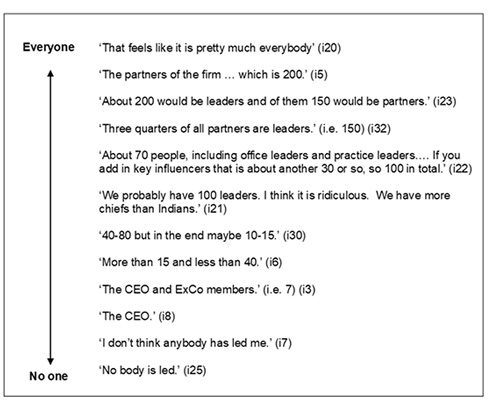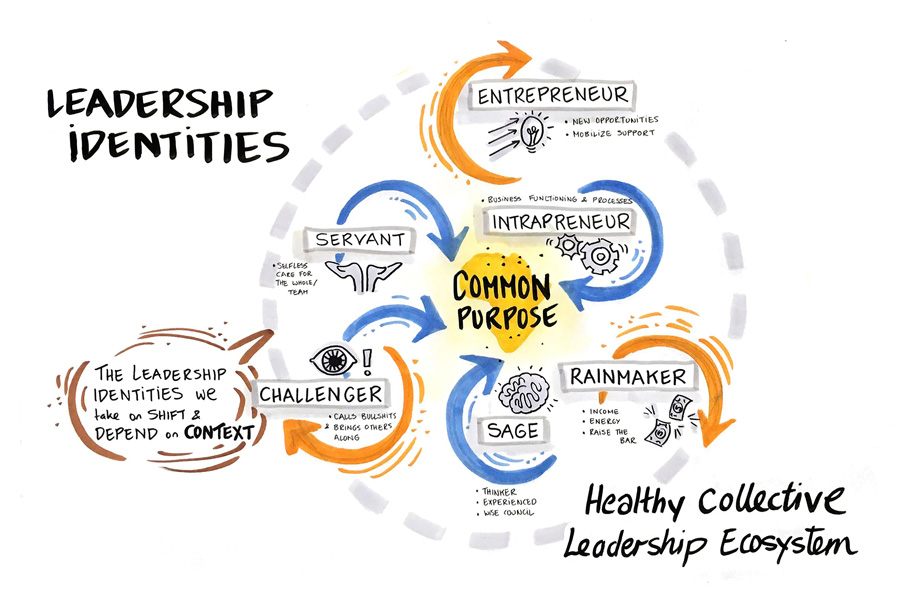Latest thinking
Follow me on Linkedin to be notified of my latest articles, podcasts and research papers as soon as they are published.
Follow
Professionals are often reluctant to present themselves as leaders in their organizations, thinking that leadership is limited to those with formal leadership roles and titles. They think their job is simply to serve clients and manage their team, but they are also reluctant to follow their formal “leaders”.
I have just published a new academic article, co authored with Ann Langley and Viviane Sergi, in Organization Studies, which explores this phenomenon. How can leadership happen in this kind of environment? And how can professionals see themselves as leaders?
 The ideas we developed were inspired by my research among senior professionals in a 200 plus partner firm. I asked: "Who are the leaders of this firm?" The professionals’ answers ranged from “everyone” to “no one”.
The ideas we developed were inspired by my research among senior professionals in a 200 plus partner firm. I asked: "Who are the leaders of this firm?" The professionals’ answers ranged from “everyone” to “no one”.
We wrote the research article to make sense of this phenomenon. Our analysis is complex and subtle, but at the core of the paper is a model of the identity dynamics of collective leadership.
.gif)
What started as a study of a very particular professional service firm has led to insights which turn out to be applicable more generally to organizations engaged in collective leadership.
When I have presented this research to senior leadership groups in professional organizations, I have been surprised by how quickly they have grasped the subtleties of the ideas, and seen themselves and their colleagues in this model. As partners recently said to me:
“I always thought of leadership as something unidirectional, about leading and following, but now I can see that it is relational and constantly shifting.”
I use this model, and the research that underpins it, to challenge professionals’ assumptions about leadership in their organizations. I help partners to see themselves as leaders, to think more expansively about their roles and responsibilities in the firm, and to embrace their role in the leadership ecosystem. As one senior professional explained recently:
“I never saw myself as a leader of this firm until I recognised myself in your model.”

Thank you to Sonja at Graphic Harvest who produced this great graphic to accompany a speech I recently gave at a conference for partners of a professional service firm.
Follow me on Linkedin to be notified of my latest articles, podcasts and research papers as soon as they are published.
Follow